
A Partnership between P22 type foundry and Hamilton wood type museum
P22 type foundry and the Hamilton Wood Type & Printing Museum are proud to announce a partnership that brings 19th Century ingenuity into relevance with the latest online technologies. This joint venture, known as the "Hamilton Wood Type Foundry" (HWT), will see a large collection of wood type designs converted into digital fonts that can be used with the latest Webfont CSS and Opentype programming abilities. P22 is working with the Hamilton Museum and other collections of scarce printed specimens as well as actual wood type to render these classic designs into fully functioning computer fonts.
Wood type first appeared on the printing scene in the early 1800s. This innovation allowed for letters to be made at very large sizes, previously not possible with metal type. As a result, posters and advertising materials underwent a massive transformation throughout the 19th Century and even more so into the 20th Century. By 1900, The Hamilton Mfg. Co. had acquired most of its competitors in the field to become the largest manufacturer in the world. Over time, wood type for letterpress printing gave way to newer technologies and became forgotten in barns, basements, and curio cabinets. The iconic look of wood type has recently enjoyed a resurgence in popularity for its aesthetic that evokes everything from old west “wanted” posters to rock, country and blues music gig posters. However, it's mostly the handmade and hand printed sensibility that holds great appeal as something of a remedy to the omnipresent cold and clean computer design of the last decades.
P22 type foundry, an independent design house, has been making computer fonts inspired by historic lettering styles for over 18 years and currently has over 1,000 unique designs in their font offerings. P22’s attention to historical accuracy, along with acknowledgment of the source material, has made it a go-to source for iconic and important fonts including those associated with the Arts and Crafts Movement, the Bauhaus, famous artists' handwriting and the legendary London Underground lettering. The inclusion of HWT to the P22 roster is a perfect addition to the legacy of keeping classic designs relevant and usable in contemporary design.
HWT REVIVALS
With the re-drawing of the wood type for digital fonts, we have taken into consideration aspects of how the fonts were originally made, as well as, how they may have changed from the original drawings - to the cutting in the factory - to the use in the print shop. The patterns in the collection of the Hamilton Wood Type Museum give some insights into how the drawings were interpreted. The cutting and hand finishing in the Hamilton shop floor may have shown variances from worker to worker and therefore fonts that are the "same", but made in different years or even different shifts may have variations in thickness and consistency.
The digital fonts seek to strike balance of the handmade with some imperfections and the pristine original drawings (and in the case of 'shopworn' variants, exaggerated distress). In sourcing examples for digitizing, there is often a fair amount of research to try and find as complete character sets as possible. Wood type often becomes separated from its punctuation in shops and complete sets of wood type are exceptionally scarce.
The specimen books produced by Hamilton and other wood type manufacturers rarely included more than a few letters of each alphabet. This was done to prevent copying by rival companies, but also because of the logistics in showing hundreds of styles in one book would make it very impractical. For these reasons, multiple sources are referenced in all of the HWT revivals. In the case of expanded character sets, brand new glyphs need to be drawn that may have never existed. Foreign accents and non-Latin characters were created for clients of Hamilton for certain fonts; these materials in the Hamilton collection are used for the relevant fonts when available.
MUSEUM BENEFIT
The Hamilton Wood Type & Printing Museum in Two Rivers, Wisconsin is the only museum dedicated to the preservation, study, production and printing of wood type. With 1.5 million pieces of wood type and more than 1,000 styles and sizes of patterns, Hamilton's collection is one of the premier wood type collections in the world and an unparalleled source of research material for type designers. A portion of proceeds from all sales of the HWT digital fonts goes toward supporting the mission and operation of the The Hamilton Wood Type & Printing Museum.
With the re-drawing of the wood type for digital fonts, we have taken into consideration aspects of how the fonts were originally made, as well as, how they may have changed from the original drawings - to the cutting in the factory - to the use in the print shop. The patterns in the collection of the Hamilton Wood Type Museum give some insights into how the drawings were interpreted. The cutting and hand finishing in the Hamilton shop floor may have shown variances from worker to worker and therefore fonts that are the "same", but made in different years or even different shifts may have variations in thickness and consistency.
The digital fonts seek to strike balance of the handmade with some imperfections and the pristine original drawings (and in the case of 'shopworn' variants, exaggerated distress). In sourcing examples for digitizing, there is often a fair amount of research to try and find as complete character sets as possible. Wood type often becomes separated from its punctuation in shops and complete sets of wood type are exceptionally scarce.
The specimen books produced by Hamilton and other wood type manufacturers rarely included more than a few letters of each alphabet. This was done to prevent copying by rival companies, but also because of the logistics in showing hundreds of styles in one book would make it very impractical. For these reasons, multiple sources are referenced in all of the HWT revivals. In the case of expanded character sets, brand new glyphs need to be drawn that may have never existed. Foreign accents and non-Latin characters were created for clients of Hamilton for certain fonts; these materials in the Hamilton collection are used for the relevant fonts when available.
MUSEUM BENEFIT
The Hamilton Wood Type & Printing Museum in Two Rivers, Wisconsin is the only museum dedicated to the preservation, study, production and printing of wood type. With 1.5 million pieces of wood type and more than 1,000 styles and sizes of patterns, Hamilton's collection is one of the premier wood type collections in the world and an unparalleled source of research material for type designers. A portion of proceeds from all sales of the HWT digital fonts goes toward supporting the mission and operation of the The Hamilton Wood Type & Printing Museum.
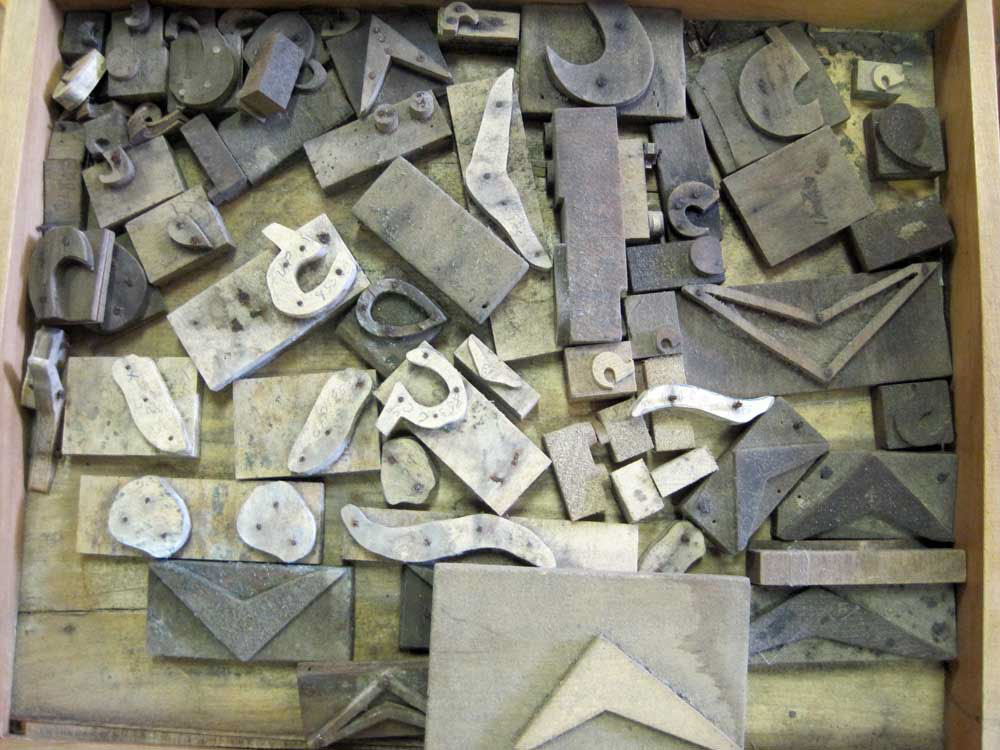
Drawers of Diacritics: Patterns for various language accent marks were used to cut type for foreign language markets. Some accents were generic and used for many different font designs while others were specific to one font style.
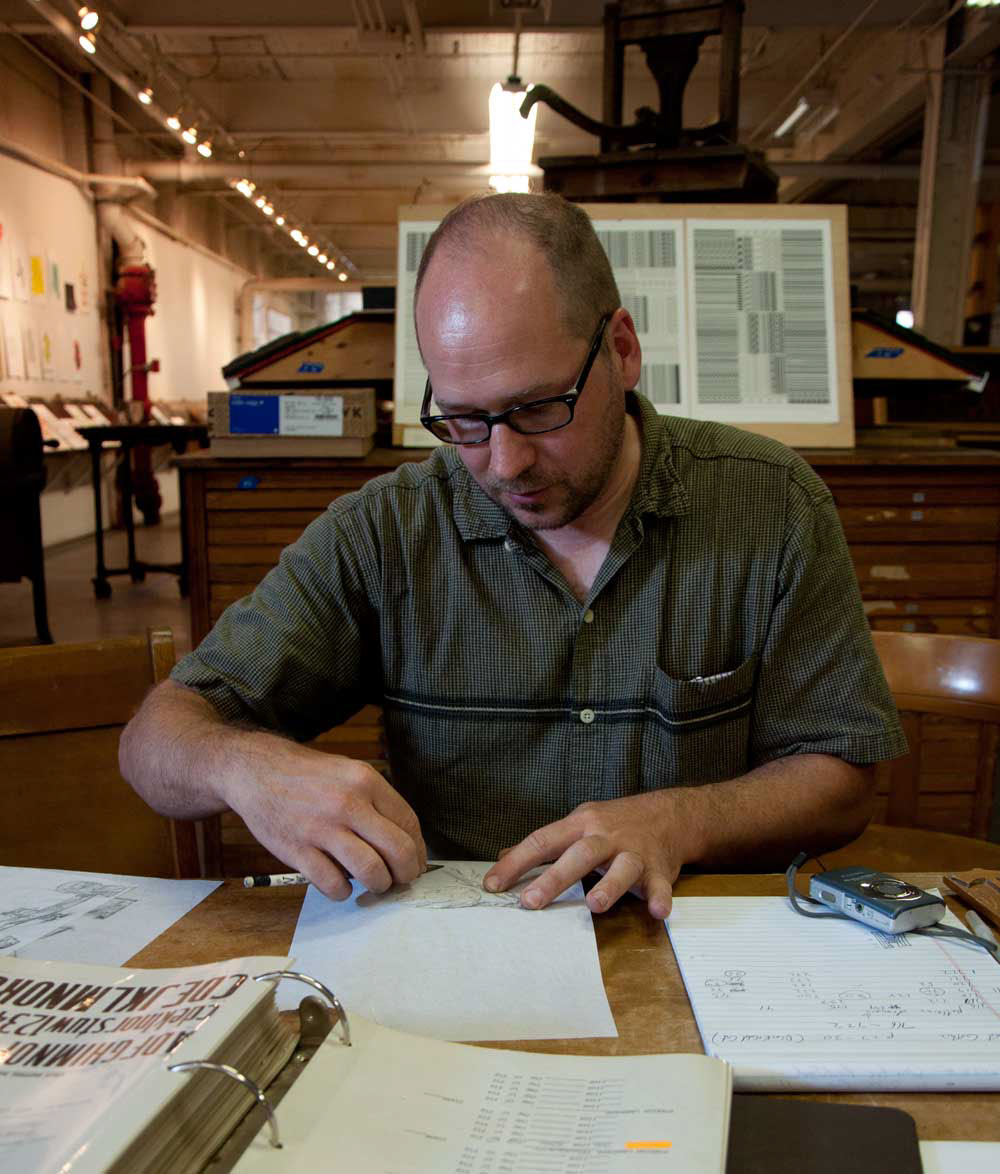
Project director Richard Kegler at the Hamilton Wood Type & Printing Museum in Two Rivers Wisconsin doing something with a pencil.
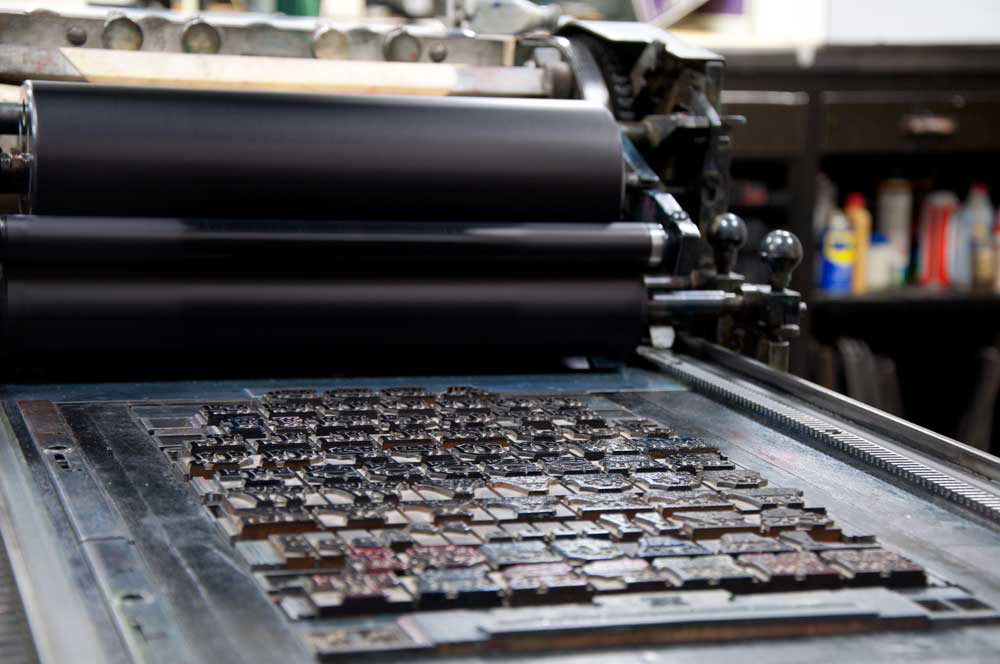
Wood type is carefully inked and printed on a vandeercook proofing press at Hamilton for a clear reference reproduction of the type in its most direct form.
Hamilton Wood Type & Printing Museum
It goes without saying that the primary source for all of the fonts that are part of the digital HWT collection are from the historic legacy of Hamilton Mfg. Co., but even more noteworthy is the working museum that in the last few years has become internationally renown for its engaging workshops and highly accessible collection of rare wood type fonts and the patterns used in the production of wood type. The digital wood type project was initaited by artistic director Bill Moran as one of his visionary approaches to making the collection known to a wider audience. Executive director Jim Moran oversees the many challenges of day-to-day operations while still finding time to travel extensively to promote the museum. Assistant director Stephanie Carpenter posesses both the skills of an organized manager and a great printer. A great team!
WOOD TYPE and Specimen Collections
Wood type has become increasingly scarce but thanks to the assistance of several collections for access to original specimen books and actual type, we have been able to augment the materials found in the vast collection of the Hamilton Wood Type & Printing Museum and find things that might otherwise be impossible to reference. It is the cumulative result of reference to these additional resources that has made the project yield some truly lost treasures ready for re-introduction to the digital age. In no particular order, we would like to acknowledge the generous assitance of:
The Cary Collection at RIT is one of the country's premier libraries on graphic communication history and practices. Melbert B. Cary, Jr. was president of Continental Type Founder Association and had amassed a sizable personal collection of printer's manuals and type specimens. The collection also includes over 300 wood type fonts, most shown in their Specimen Portfolio. Endless thanks are due to Assistant Curator Amelia Hugill-Fontanel for ongoing research assistance on this project and many other P22 type foundry projects.
The Newberry and specifically the Newberry’s John M. Wing Foundation on the History of Printing is one of the world’s leading collections in its field. Before the Hamilton Wood Type Museum was formed, the Hamilton company donated its typographic specimen book collection to the Newberry. Special thanks to Wing curator Paul Gehl for guidance and assistance.
A non-profit community printshop, gallery and book arts center in Buffalo NY that was formed by P22 founders Richard Kegler and Carima El-Behairy as a way of preserving the history of printing and book arts. The functioning printshop contains hundreds of fonts and approximately 100 wood type fonts aquired from local printshops. This collection has proven to be extremely informative on details found in many of the fonts in progess for HWT.
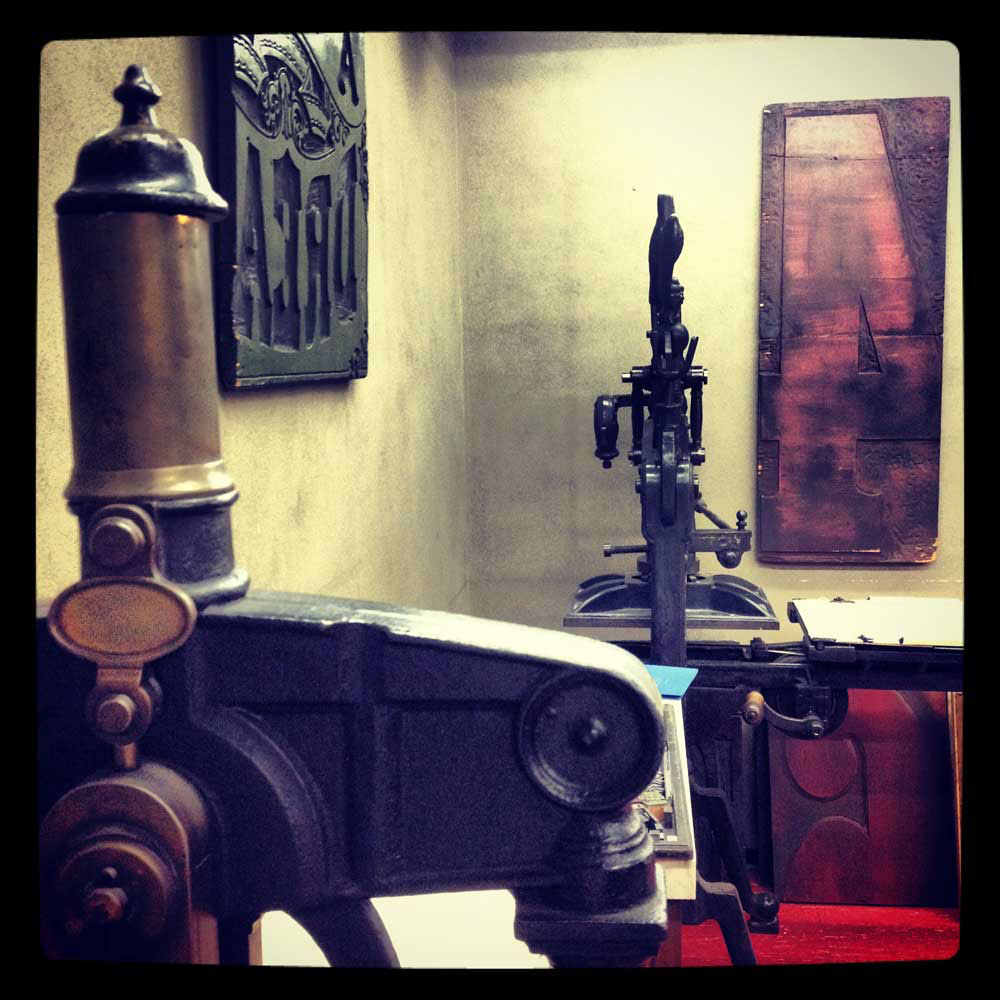
MASSEY COLLEGE PRINT SHOP
A small yet tight printshop within the University of Toronto contains an incredibly large collection of over 400 wood type fonts and a specialized library on type and printing history.
A small yet tight printshop within the University of Toronto contains an incredibly large collection of over 400 wood type fonts and a specialized library on type and printing history.

PLATEN PRESS MUSEUM
The singular vision of letterpress afficionado Paul Aken is a massive collection of presses and type. Not a traditional museum in any sense of the word, but a walk through with Paul can be one of the most educational lessons in letterpess printing lore anyone may ever experience. Visits are by appointment only.
The singular vision of letterpress afficionado Paul Aken is a massive collection of presses and type. Not a traditional museum in any sense of the word, but a walk through with Paul can be one of the most educational lessons in letterpess printing lore anyone may ever experience. Visits are by appointment only.
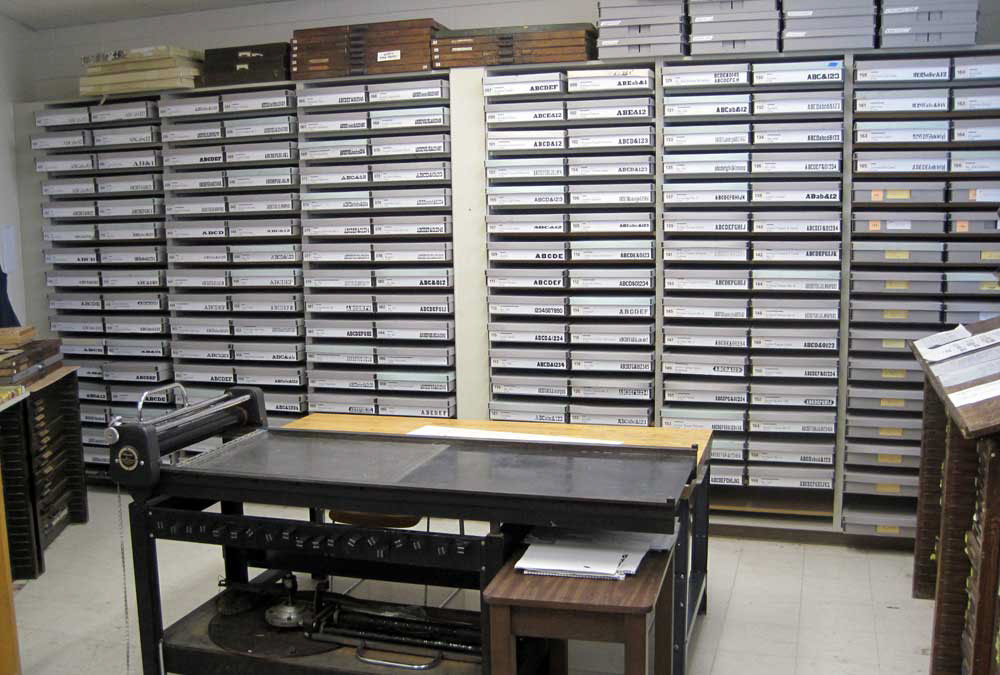
ROB ROY KELLY AMERICAN WOOD TYPE COLLECTION
Through the focused dilligence of David Sheilds (design curator of the Rob Roy Kelly American Wood Type Collection at the University of Texas, Austin), this important collection of 160+ pre-1900 wood type fonts has been given a new level of access and research into the identification and manufacturing processes that was previously unknown. Rob Roy Kelly's 1969 book: American Wood Type, 1828–1900 is still considered the most comprehensive overview and history of wood type.
Through the focused dilligence of David Sheilds (design curator of the Rob Roy Kelly American Wood Type Collection at the University of Texas, Austin), this important collection of 160+ pre-1900 wood type fonts has been given a new level of access and research into the identification and manufacturing processes that was previously unknown. Rob Roy Kelly's 1969 book: American Wood Type, 1828–1900 is still considered the most comprehensive overview and history of wood type.
